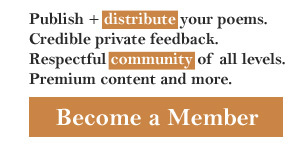This is an analysis of the poem Spring In War Time that begins with:
I feel the Spring far off, far off,
The faint far scent of bud and leaf-- ... full text
Elements of the verse: questions and answers
The information we provided is prepared by means of a special computer program. Use the criteria sheet to understand greatest poems or improve your poetry analysis essay.
- Rhyme scheme: aaXaa XbXbb XcXcc bdXdd
- Stanza lengths (in strings): 5,5,5,5,
- Closest metre: iambic trimeter
- Сlosest rhyme: no rhyme
- Сlosest stanza type: tercets
- Guessed form: unknown form
- Metre: 110011111 01110111 111011101 00101 11 01110111 10010111 11011101 1101 11 01010001 10011101 11010101 1001 11 10011101 01010111 11010101 1011 11
- Amount of stanzas: 4
- Average number of symbols per stanza: 143
- Average number of words per stanza: 28
- Amount of lines: 20
- Average number of symbols per line: 28 (strings are less long than medium ones)
- Average number of words per line: 6
Mood of the speaker:
The speaker asks many questions. Perhaps, he or she is in confusion.
The author used lexical repetitions to emphasize a significant image; far is repeated.
The author used the same word the at the beginnings of some neighboring stanzas. The figure of speech is a kind of anaphora.
There is a poetic device epiphora at the end of some neighboring lines grief, fight, graves, death are repeated).
If you write a school or university poetry essay, you should Include in your explanation of the poem:
- summary of Spring In War Time;
- central theme;
- idea of the verse;
- history of its creation;
- critical appreciation.
Good luck in your poetry interpretation practice!
Pay attention: the program cannot take into account all the numerous nuances of poetic technique while analyzing. We make no warranties of any kind, express or implied, about the completeness, accuracy, reliability and suitability with respect to the information.

